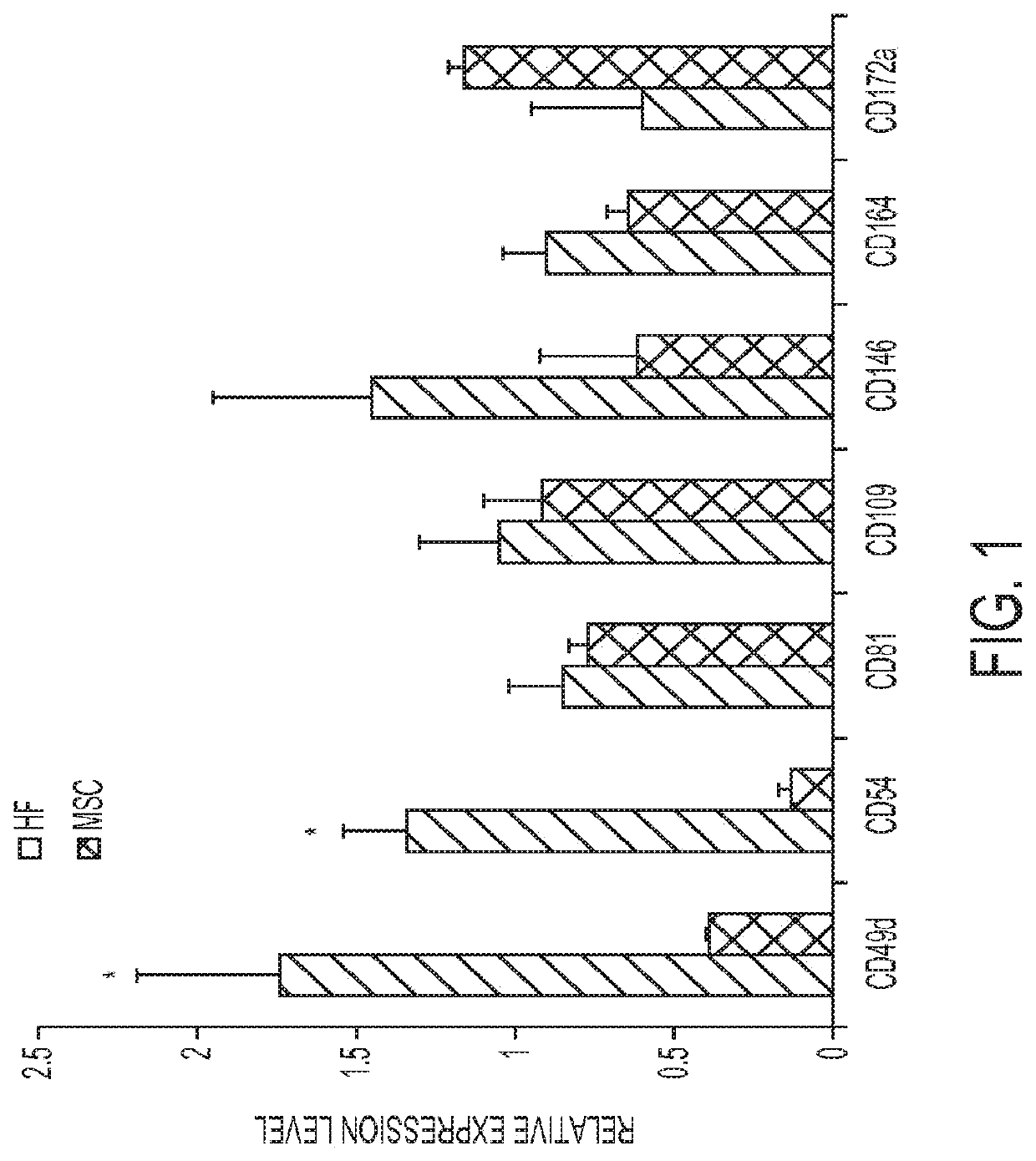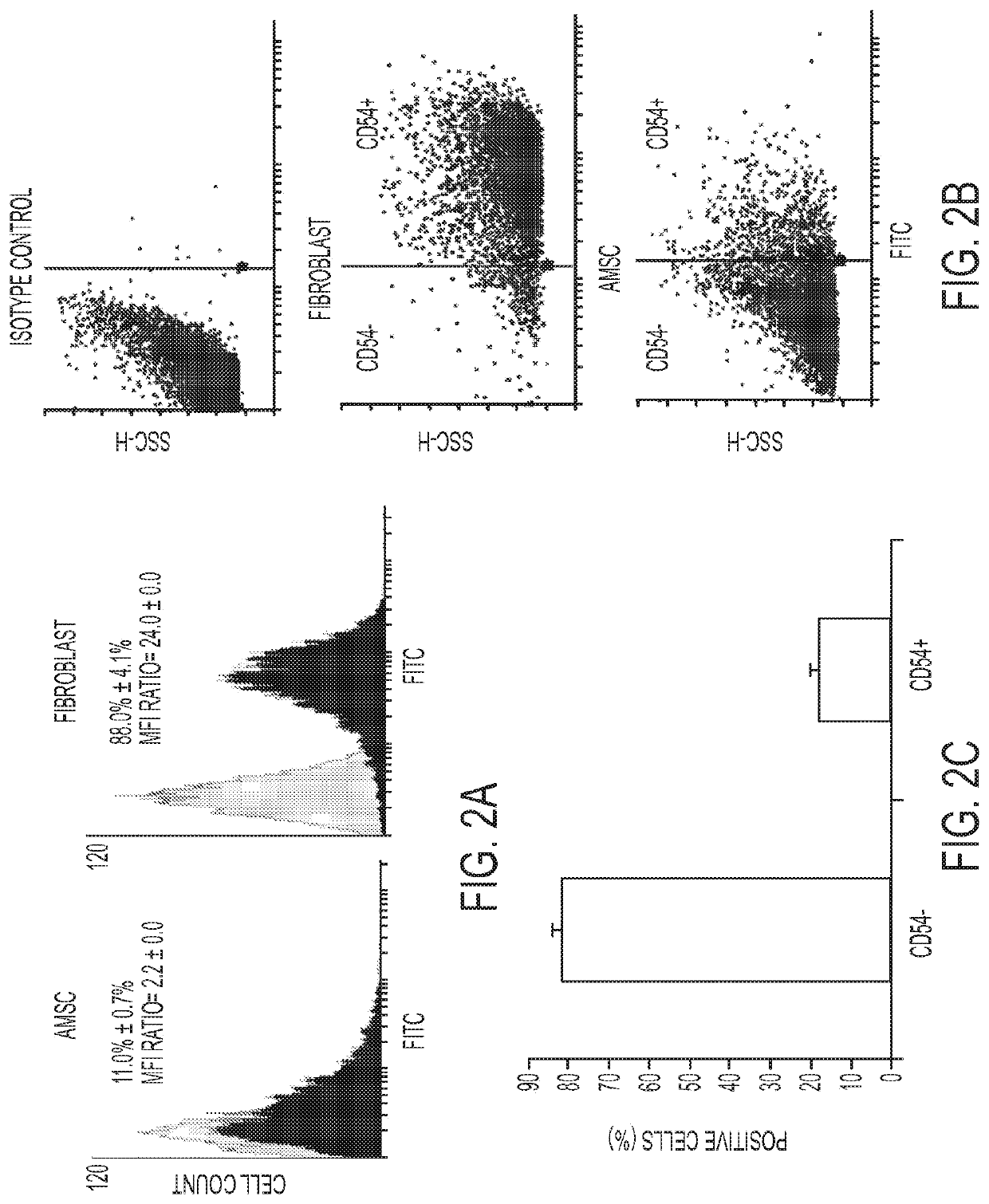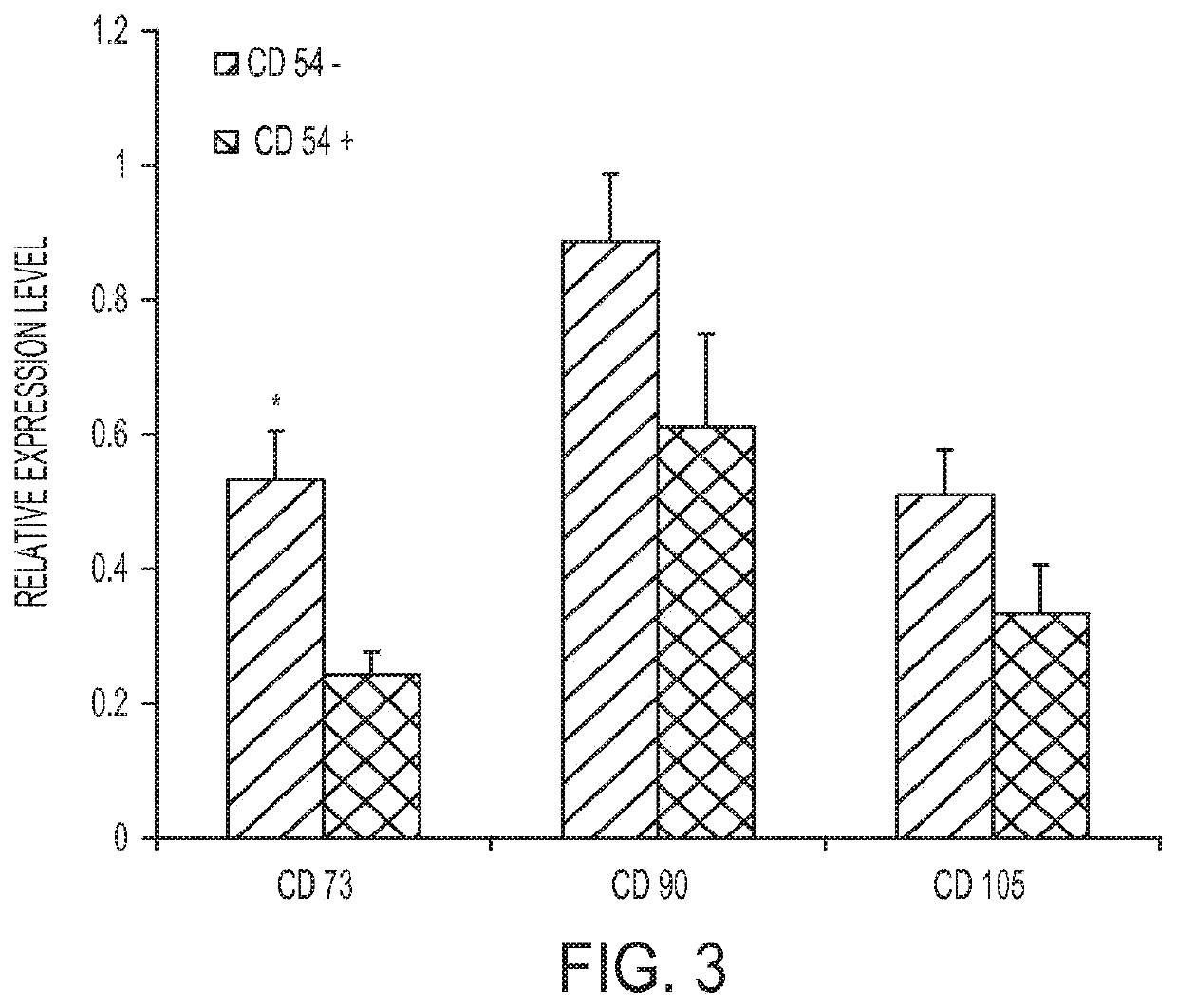Enhanced differentiation of mesenchymal stem cells
a technology enhanced differentiation, which is applied in the field of mesenchymal stem cells, can solve the problems of fibroblast contamination of their use, and achieve the effect of effective strategies for purifying mscs
- Summary
- Abstract
- Description
- Claims
- Application Information
AI Technical Summary
Benefits of technology
Problems solved by technology
Method used
Image
Examples
examples
Isolation and Cultivation of AMSCs
[0037]AMSCs were isolated from lipoaspirate using a modified method as described [23]. Briefly, lipoaspirate was obtained and washed with equal volume of hank's buffered salt solution (HBSS; Invitrogen, Grand Island, N.Y.). After gentle shaking, isolated samples were separated into two phases. The lower phase (containing stem cells, adipocytes, and blood) was washed and enzymatically dissociated with 0.075% collagenase type I (Sigma-Aldrich, St. Louis, Mo.) / HBSS for 1 h at 37° C. with gentle shaking. Collagenase was inactivated by adding a 1:10 volume of fetal bovine serum (FBS) to adipose collagenase mixture.
[0038]The mixture was centrifuged at 400 g for 10 min at 25° C. The cellular pellet was resuspended in red blood cell lysis buffer (eBioscience, San Diego, Calif.) and incubated at 25° C. for 10 min. The pellet was resuspended in washing medium (HBSS with 2.4% FBS) and sequentially passed through 100, 70, and 40μm mesh filters to remove cell ma...
PUM
| Property | Measurement | Unit |
|---|---|---|
| concentration | aaaaa | aaaaa |
| compositions | aaaaa | aaaaa |
| size | aaaaa | aaaaa |
Abstract
Description
Claims
Application Information
 Login to View More
Login to View More - R&D
- Intellectual Property
- Life Sciences
- Materials
- Tech Scout
- Unparalleled Data Quality
- Higher Quality Content
- 60% Fewer Hallucinations
Browse by: Latest US Patents, China's latest patents, Technical Efficacy Thesaurus, Application Domain, Technology Topic, Popular Technical Reports.
© 2025 PatSnap. All rights reserved.Legal|Privacy policy|Modern Slavery Act Transparency Statement|Sitemap|About US| Contact US: help@patsnap.com



